- Home
- Zadie Smith
The Book of Other People
The Book of Other People Read online
Table of Contents
Title Page
Copyright Page
Introduction
Judith Castle - David Mitchell
Justin M. Damiano - Daniel Clowes
Frank - A. L. Kennedy
Gideon - ZZ Packer
Gordon - Andrew O’Hagan
Hanwell Snr - Zadie Smith
J. Johnson - Nick Hornby, with illustrations by Posy Simmonds
Lélé - Edwidge Danticat
The Liar - Aleksandar Hemon
Jordan Wellington Lint - Chris Ware
Magda Mandela - Hari Kunzru
The Monster - Toby Litt
Nigora - Adam Thirlwell
Judge Gladys Parks-Schultz - Heidi Julavits
Puppy - George Saunders
Rhoda - Jonathan Safran Foer
Soleil - Vendela Vida
Roy Spivey - Miranda July
Cindy Stubenstock - A. M. Homes
Theo - Dave Eggers
Perkus Tooth - Jonathan Lethem
Donal Webster - Colm Tóibín
Newton Wicks - Andrew Sean Greer
Contributors
Acknowledgements
PENGUIN BOOKS
Published by the Penguin Group
Penguin Group (USA) Inc., 375 Hudson Street, New York, New York 10014, U.S.A.
Penguin Group (Canada), 90 Eglinton Avenue East, Suite 700, Toronto,
Ontario, Canada M4P 2Y3 (a division of Pearson Penguin Canada Inc.)
Penguin Books Ltd, 80 Strand, London WC2R 0RL, England
Penguin Ireland, 25 St Stephen’s Green, Dublin 2, Ireland (a division of Penguin Books Ltd)
Penguin Group (Australia), 250 Camberwell Road, Camberwell,
Victoria 3124, Australia (a division of Pearson Australia Group Pty Ltd)
Penguin Books India Pvt Ltd, 11 Community Centre, Panchsheel Park, New Delhi - 110 017, India
Penguin Group (NZ), 67 Apollo Drive, Rosedale, North Shore 0632,
New Zealand (a division of Pearson New Zealand Ltd)
Penguin Books (South Africa) (Pty) Ltd, 24 Sturdee Avenue, Rosebank, Johannesburg 2196, South Africa
Penguin Books Ltd, Registered Offices:
80 Strand, London WC2R 0RL, England
First published in Great Britain by Hamish Hamilton, an imprint of Penguin Books Ltd. 2007
First published in the United States of America in Penguin Books 2007
Introduction and “Hanwell Snr” copyright © Zadie Smith, 2007; Selection copyright © 826NYC, 2007; Copyright © David Mitchell, 2007; Copyright © Daniel Clowes, 2007; Copyright © A. L. Kennedy, 2007; Copyright © ZZ Packer, 2007; Copyright © Andrew O’Hagan, 2007; Copyright © Nick Hornby, 2007; Copyright © Posy Simmonds; Copyright © Edwidge Danticat, 2007; Copyright © Aleksandar Hemon, 2007: Copyright © Chris Ware, 2007; Copyright © Hari Kunzru, 2007; Copyright © Toby Litt, 2007; Copyright © Adam Thirlwell, 2007; Copyright © Heidi Julavits, 2007; Copyright © George Saunders, 2007; Copyright © Jonathan Safran Foer, 2007; Copyright © Vendela Vida, 2007; Copyright © Miranda July, 2007; Copyright © A. M. Homes, 2007; Copyright © Dave Eggers, 2007; Copyright © Jonathan Lethem, 2007; Copyright © Colm Toibin, 2007; Copyright © Andrew Sean Greer, 2007 All rights reserved
“Gordon” by Andrew O’Hagan, “Hanwell Snr” (as “Hanwell Senior”) by Zadie Smith, “Magda Mandela” by Hari Kunzru, “Puppy” by George Saunders, “Roy Spivey” by Miranda July, and “Donal Webster” by Colm Toibin first appeared in The New Yorker. “Nigora” by Adam Thirlwell and “J. Johnson” by Nick Hornby with illustrations by Posy Simmonds first appeared in The Guardian (London). “Cindy Stubenstock” (as “Fair Art”) by A. M. Homes published in Exhibit-E, New York.
Publisher’s Note
These selections are works of fiction. Names, characters, places, and incidents either are the product of the author’s imagination or are used fictitiously, and any resemblance to actual persons, living or dead, business establishments, events, or locales is entirely coincidental.
LIBRARY OF CONGRESS CATALOGING IN PUBLICATION DATA
The book of other people / edited by Zadie Smith.
p. cm.
eISBN : 978-1-101-20126-8
1. Short stories, American. 2. Short stories, English.
3. Characters and characteristics in literature. 4. Fiction—Technique. I. Smith, Zadie.
PS648.S5B66 2007
823’.018—dc22 2007038785
The scanning, uploading and distribution of this book via the Internet or via any other means without the permission of the publisher is illegal and punishable by law. Please purchase only authorized electronic editions, and do not participate in or encourage electronic piracy of copyrighted materials.
Your support of the author’s rights is appreciated.
http://us.penguingroup.com
Introduction
The Book of Other People is about character. The instruction was simple: make somebody up. Each story was to be named after its character: ‘Donal Webster’ by Colm Tóibín, ‘Cindy Stubenstock’ by A. M. Homes, ‘Frank’ by A. L. Kennedy, and so on. When the commission was sent out, there were no rules about gender, race or species. This freedom resulted in ‘The Monster’ by Toby Litt and ‘Puppy’ by George Saunders. Late in the making of this book I tried to make a case for first and last names, for reasons of uniformity. The idea was not popular. Reproduced here is Edwidge Danticat’s protest, convincing in its simplicity: ‘I think the variety of names is good. It makes it less monotonous-looking. Since people are named different things by different people.’ Surnames have not been forced upon Danticat’s ‘Lélé’ or Adam Thirlwell’s ‘Nigora’ or on any others who did not want them. In one case, the omitted last name is the deliberate secret upon which the story hinges. In another - to use a distinction of Simone Weil’s - the character is a sacred human being and not a ‘person’ or ‘personality’, and his particular name is not important.
There are twenty-three stories in this volume, too many to mention individually. Each is its own thing entirely. The book has no particular thesis or argument to convey about fictional character. Nor is straight ‘realism’ or ‘naturalism’ - if such things exist - the aim. The hope was that the finished book might be a lively demonstration of the fact that there are as many ways to create ‘character’ (or deny the possibility of ‘character’) as there are writers. It is striking to see how one simple idea plays out in individual minds, the ‘character’ of the prose itself being as differentiated as the ‘other people’ with which these stories are nominally populated. As editor, I have tried to retain the individuality of each piece by leaving them, by and large, little changed.
There is, however, an element of their character that has been removed: the fonts. Publishers standardize fonts to suit the style of the house, but when writers deliver their stories by e-mail, each font tells its own story. There are quite a few writers in this volume who use variations on the nostalgic American Typewriter font (and they are all American), as if the ink were really wet and the press still hot. We have two users of the elegant, melancholic Didot font (both British), and a writer who centres the text in one long, thin strip down the page, like a newspaper column (and uses Georgia, a font that has an academic flavour). Some writers size their text in a gigantic 18. Others are more at home in a tiny 10. There are many strange, precise and seemingly intimate tics that disappear upon publication: paragraphs separated by pictorial symbols, titles designed just so, outsized speech marks, centred dialogue, un-centred paragraphs, no paragraphs at all. It seems a shame to lose these idiosyncratic layouts and their subtle effects. Anyway: I hope what remains will satisfy.
Before leaving you to the stories themselves, I’d like to speak brie
fly of a technical matter, one that is usually considered to be in bad taste if you are speaking of the ‘Art of Fiction’: money. This book is a ‘charity anthology’, which means the editor must ask writers to work for free, knowing full well that a ‘story’ is like a gas that expands into whatever available space one has. When you begin a story it’s impossible to say how much time will pass before you’re able to finish it. It might take two hours of your time, or a few days, or four months, or more (this is particularly true for graphic novelists). So it was with this project. I want to thank all the writers for putting time aside - sometimes a great deal of time - to do something for nothing. Traditionally, writers denounce the very idea of writing for no remuneration (‘I don’t want the world to give me anything for my books,’ George Eliot once said, ‘except money to save me from the temptation of writing only for money’), but maybe there is also an occasional advantage in writing once again as you wrote in the very beginning, when it was still simply writing and not also a strange breed of employment. It is liberating to write a piece that has no connection to anything else you write, that needn’t be squished into a novel, or styled to fit the taste of a certain magazine, or designed in such a way as to please the kind of people who pay your rent. In The Book of Other People we find writers not only trying on different skins but also unlikely styles and variant attitudes, wandering into landscapes one would not have placed them in previously. I recommend them to you with the proviso that their order is simply alphabetical (by character). Each reader should line them up as they like.
The beneficiary of this book is 826 New York,1 a non-profit organization dedicated to supporting students aged six to eighteen with their creative and expository writing skills, and to helping teachers inspire their students to write. So The Book of Other People represents real people making fictional people work for real people - a rare example of fictional people pulling their own weight for once.
Zadie Smith
6 March 2007
Rome
Judith Castle
David Mitchell
‘Hello? Judith Castle?’
‘This is she.’
‘My name’s Leo Dunbar. I’m Oliver’s - ’
‘Oliver’s brother! Oh, I’ve heard bucketloads about you, Leo!’
‘Uh . . . likewise, Judith. Look, I’m - ’
‘All rapturous, I trust?’
‘I’m sorry?’
‘What Olly’s told you. About little old moi. All rapturous, I trust?’
‘Look, Judith, I have . . . some, well, some rather dreadful tidings.’
‘Oh, I know! And let me tell you, I’m spitting kittens about it.’
‘You . . . know?’
‘It’s all over the news, of course.’
‘What?’
‘A national rail strike is national news, Leo! The very weekend I’m due to come down to Lyme Regis and consummate my relationship with Olly, those bloody train drivers go on strike! It’ll be back to the seventies, spiralling inflation, Saturday Night Fever and uppity Arabs all over again, mark my words. These things go in cycles. Still, no union bully is going to stand between your brother and me. Now I do drive, but motorways bring on my migraine, as Olly has doubtless explained. Are you driving up to fetch me, or is he?’
‘Judith, my news was a little different.’
‘Spit it out, then.’
‘Oliver’s . . . dead, actually, Judith . . . Judith? Are you there?’
‘But our suite is already booked. A de luxe double. The girl at, at, at the Hotel Excalibur took my credit card number. It’s all confirmed. I told Oliver yesterday. Olly wasn’t dead then. He wasn’t even ill.’
‘It was a hit-and-run. He went to buy a bag of frozen peas, but never made it back. The ambulanceman said he was . . . the ambulanceman said Oliver would have been dead before he landed.’
‘But this is . . . outrageous . . .’
‘We can’t believe it ourselves.’
‘This is . . . well . . . your brother . . . when’s the funeral?’
‘The funeral?’
‘Olly and I were lovers, Leo! How can I not come to the funeral?’
‘I’m . . . I’m afraid we’ve already had the funeral.’
‘Already?’
‘This morning. Very low-key. I tipped his ashes off the Cobb.’
‘Off the what?’
‘The Cobb. The sea-wall at Lyme Regis.’
‘Oh. The Cobb. Yes. Olly promised to take me there . . . for the sunset. Tomorrow night. The sunset. Oh. This is all . . . so . . . so . . . dead?’
‘Dead.’
‘The very least I can do is to come and help out.’
‘Judith, you’re an angel, and Olly spoke about you in the fondest possible terms, but, if I can be frank, best not to. Everything’s very . . . intense. You understand, don’t you? There’re relatives to be told, an ex-wife, and then the business to be wound up, solicitors . . . mountains of paperwork . . . insurance, wills, powers of attorney . . . a thousand-and-one things . . . it just never stops . . .’
Camilla’s holidaying in Portugal with her father and Fancy-Piece. I got through to her voicemail and left the bare bones of my tragedy. Watering my tomato plants calmed me, until I spotted some green-fly. The vile little things got a good drenching with aphid killer. Then it was the turn of those ants who have colonized my patio. Kettle after kettle after kettle I boiled, until their bodies covered the crazy paving like a spilt canister of commas. Suddenly I found myself sitting in the conservatory with Evita playing at an unpleasant volume. Olly admitted that Sir Andrew turns out a fine tune. It was one of the last things he said to me. ‘Another Suitcase in Another Hall’ came on and suddenly my eyes streamed, unstoppably. This weekend was to have been a new beginning. Seeing Olly’s studio; meeting his family; making love with a sea-breeze caressing the curtains. After so many limp introductions and dashed hopes, here, at last, was a man whose faults could be mended. Some brisk walks to flatten that paunch. A tactful word to get him to ditch that moustache. Some musicals to oust his ‘electric folk’ tendencies. That Olly and I were intellectual equals was no surprise: Soulmate Solutions don’t let any old Tom, Dick and Harry sign up. But at our rendezvous in Bath, he couldn’t hide how utterly enchanté he was with little old moi on a carnal level. Once over fifty, most British women go to seed, leaving the rest of us to arise, like roses in a bombsite.
I swerved my Saab into the last parking space at the clinic, to the fury of some Flash Harriet who thought she had a prior claim. Water off a duck’s back. To my dismay, my bookshop was open but devoid, apparently, of all life. Winnifred was in the stock room, busy with a sneezing fit, so I manned the till and started sifting the morning’s post: three invoices; one tax form; two CVs from great white hopes after Saturday jobs; a letter informing the recipient that he has won a mansion in Fiji via the lottery - for every blatant scam, there are a thousand halfwits who refuse to understand that nobody gives money away - and a postcard from Barry from Grainge-over-Sands, the asylum-seeker’s detention centre of the soul. An Australian came in and asked for The No. 1 Ladies’ Detective Agency, so I got chatting, and soon persuaded Milly from Perth to buy the Alexander McCall Smith box set. She left, and Winnifred saw fit to put in an appearance. Winnifred is a lesbian myopic vegan Welsh homoeopathic Pooh Bear sort of a woman.
‘Judith! What can we . . . do for you today?’
‘Re-order the Ladies’ Detective Agency box set, for starters. We’re still a martyr to our hayfever, aren’t we?’
‘But . . . you do remember, Judith, don’t you . . . that, actually . . .’
‘That actually what, Winnifred?’
‘. . . you aren’t actually employed here . . . any more. Not as such.’
‘Someone has to keep on top of things, with Barry swanning off while the town is swimming with holidaymakers. If that last customer had been one of those gypsies - whoops, it’s “travellers” nowadays, isn’t it? - you’d have an empty shop by now.
Think on.’
‘But . . . Barry’s probably not . . . expecting . . . to actually pay you.’
‘Am I dressed like I worry about next week’s rent?’
‘Judith . . . Barry did say that if you came in, I should ask you to - ’
‘Oliver’s dead, Winnifred.’ The words burst out of me. ‘My . . . my beau. Dead.’
Winnifred took a step back. ‘Oh, Judith!’
‘My soul-mate.’ A sob swallowed me whole. ‘Hit-and-run.’
‘Oh, Judith!’
‘Really, the irony is too much to bear. Olly was going to introduce me to his family, tomorrow. Show me how to hunt fossils together. Share ice-cream on the Cobb. Consummate our relationship. Such . . . dreadful tidings . . . I wasn’t sure to whom I could turn . . .’
‘Oh, Judith. Sit down. I’ll fetch a cup of tea.’
‘The theatre committee need me in thirty minutes, but I could find a little time for a sympathetic ear . . . Earl Grey, then, with a slice of lemon, if it’s not too much trouble.’
My Amateur Dramatics Society is putting on Sir Andrew’s The Phantom of the Opera in October, so rehearsals are well under way. Our director, Roger, gave the lead to June Nolan, wife of Terry Nolan. All Lions Clubbers together. Very cosy. Never mind that June Nolan has all the operatic elegance of a dog-trainer. I turned down a minor role, and focused on stage-management. Let others grapple for glory. My job is thankless, and hectic; like I told Olly, if Muggins here didn’t do it, the whole place would fall apart in a week.
Tears welled up again as I unlocked my little theatre. Olly was to visit me for Phantom’s opening night. Everyone, this is Oliver Dunbar, a very dear friend. Runs a studio in Dorset, but he’s exhibited in New York City, no less. Oh, ignore Mr Modesty! Olly’s photography is very highly sought after.

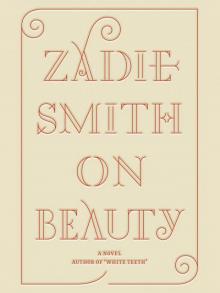 On Beauty
On Beauty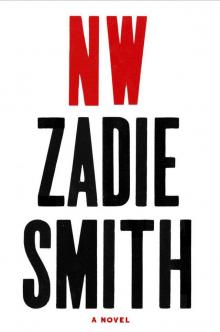 Nw
Nw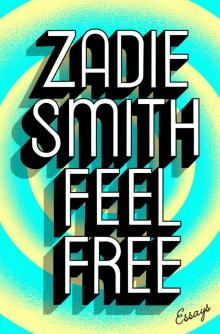 Feel Free: Essays
Feel Free: Essays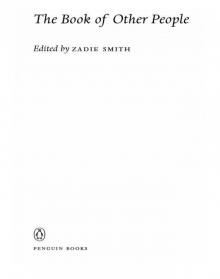 The Book of Other People
The Book of Other People White Teeth
White Teeth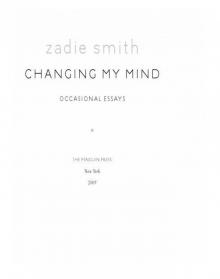 Changing My Mind: Occasional Essays
Changing My Mind: Occasional Essays N.W.
N.W.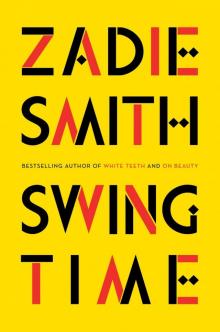 Swing Time
Swing Time The Embassy of Cambodia
The Embassy of Cambodia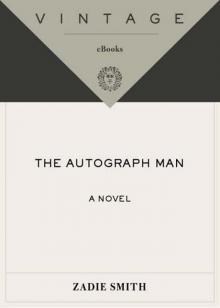 The Autograph Man
The Autograph Man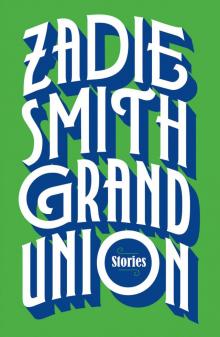 Grand Union
Grand Union Intimations
Intimations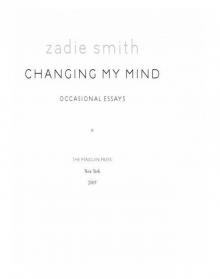 Changing My Mind
Changing My Mind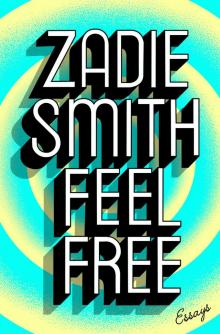 Feel Free
Feel Free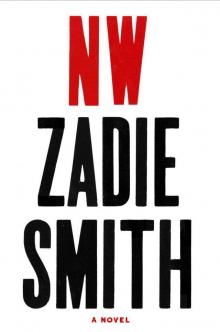 NW: A Novel
NW: A Novel